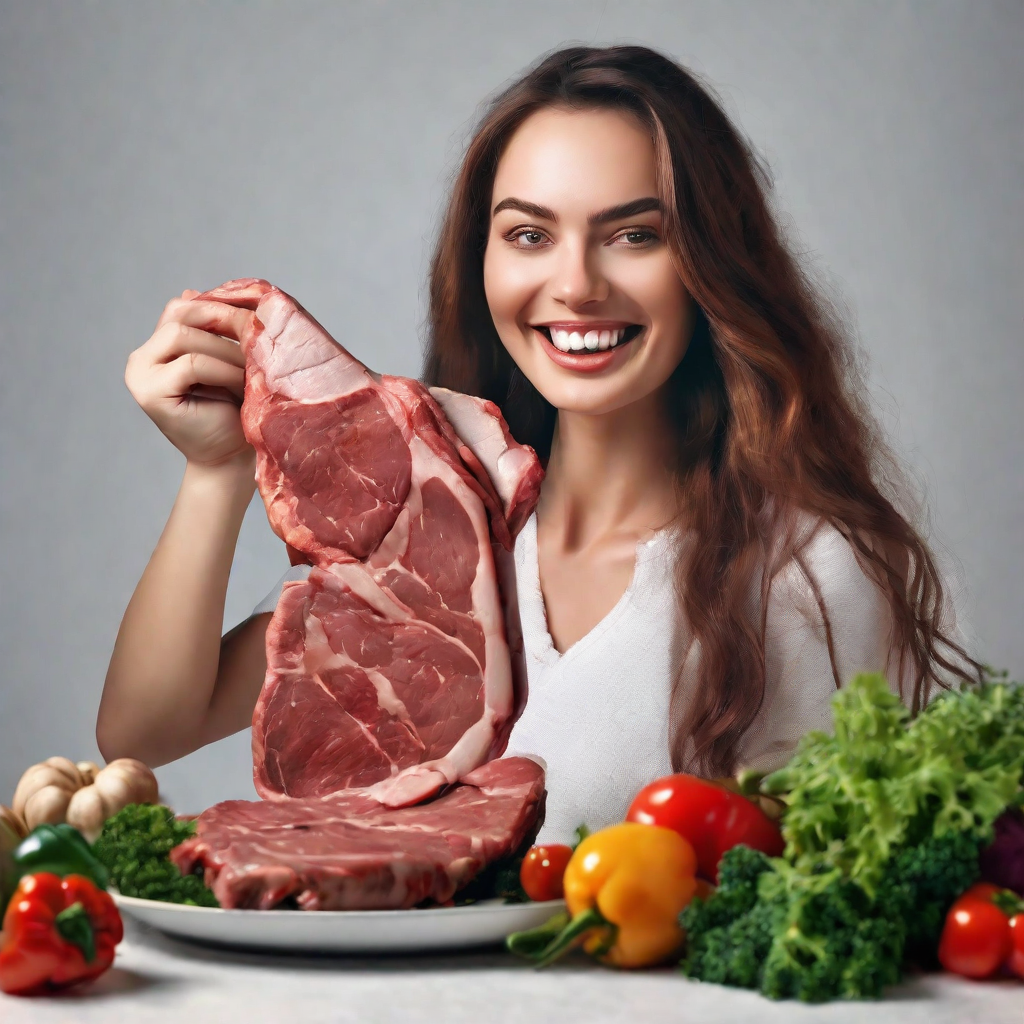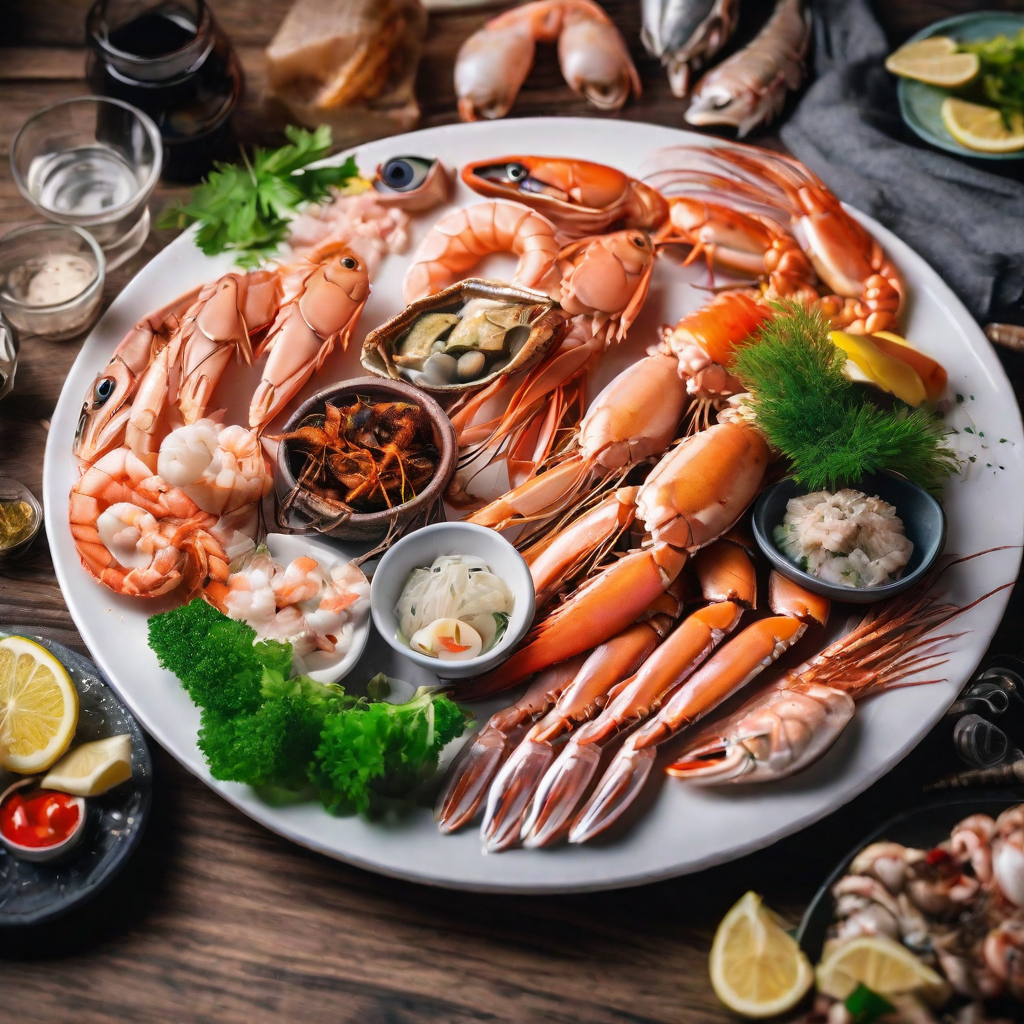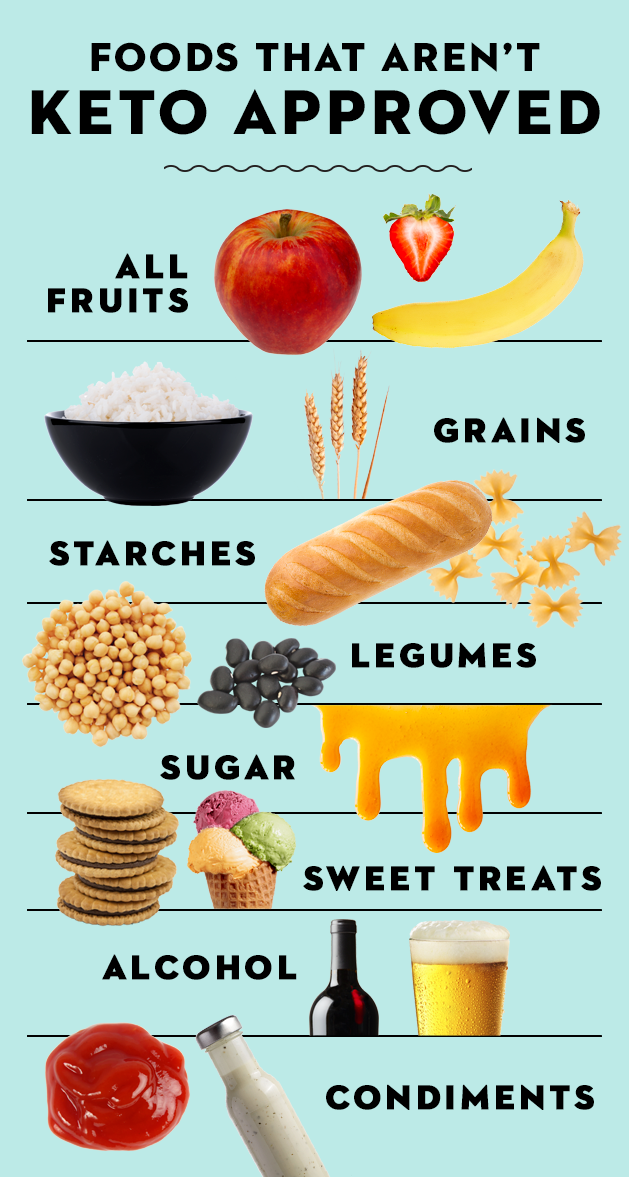Ketogenic Diet: What You Can (and Can’t) Eat
Ketogenic Diet: What You Can (and Can’t) Eat

Introduction
The high-fat, low-carb ketogenic diet has taken over much of the diet industry after celebrities like Kourtney Kardashian and Halle Berry endorsed it in years past — since then, it seems everyone has an opinion on the extremely high-fat (and nearly zero-carb!) diet plan. If you’re curious about the ketogenic diet, you’re not alone: There are very few other diets where copious amounts of bacon and cheese are on the menu. Simply listing a checklist of ingredients you can and can’t eat while on the ketogenic diet doesn’t explain how it works exactly.
Stefani Sassos, MS, RD, CDN, the Good Housekeeping Institute‘s registered dietitian, explains that the diet’s main principle revolves around maintaining ketosis. It’s a metabolic state that weans your body onto fat as a source of daily energy as opposed to carbohydrates, which capitalizes on blood sugar within food. Originally designed to help patients fight epilepsy, this diet guides you into ketosis by strictly eliminating significant food groups that you may normally interact with every day.
Namely, anything containing sugars (both natural and added) and carbohydrates are off-limits, as they prevent your metabolism from running on fat as a main energy source. Most keto diet plans are considered harsher than no-sugar diets in their entirety because deprivation requires willpower that is often counterintuitive to your needs. Paired with fads like intermittent fasting, keto could be downright dangerous.
Sassos stresses that while the ketogenic diet may indeed result in weight loss for those who adapt their lifestyle, if you know you can’t give up bread and fruits entirely, that’s okay — there are countless other diet plans that can also help you lose weight in the long run without eliminating food groups.
It’s crucial to talk to your primary care provider before taking a swing at achieving ketosis, especially as there are some reports that suggest ketogenic programs lead to yo-yo dieting. Here’s what you need to know about keto-friendly foods you can eat, items you should avoid to maintain ketosis, and treats you can enjoy every once in a while
What You Can Eat on a Ketogenic Diet:
Get ready for a whole lot of fat, some protein, and just about zero carbs throughout your day. Keto-approved fridges and pantries include plenty of meat, seafood, dairy, eggs, nuts, fats and oils, and some veggies that grow above ground.
- Plenty of meats: Chicken, pork, steak, ground beef, lamb, bacon, turkey, ham, and sausage (in limited amounts).
- Fatty seafood: Salmon, snapper, tuna, halibut, cod, trout, catfish, scallops.
- Shellfish: Crab, clams, oysters, lobster, mussels.
- Most fats and oils: Eggs, butter, coconut oil, olive oil, ghee, lard, avocado oil (and plenty of avocados!), mayonnaise.
- High-fat dairy: Heavy cream, soft and hard cheeses, cream cheese, and sour cream.
- A selection of vegetables: Cauliflower, cabbage, broccoli, zucchini, green beans, peppers, eggplants, tomatoes, asparagus, cucumber, onion, mushroom, spinach, lettuce, and olives.
- Most nuts: Almonds, peanuts, macadamia nuts, pecans, hazelnuts, walnuts, as well as their retrospective butters (look for natural varieties that aren’t sweetened).
- A selection of berries: Blueberries, blackberries, raspberries, all in moderation.
- Some of your favorite beverages: Unsweetened coffee and black tea is OK. Dry wine, champagne, and hard liquor should be enjoyed sparingly.
- All spices and some sweeteners: Enjoy stevia and sucralose every once in a while.

Meat and Poultry in ketogenic diet
Naturally devoid of all carbohydrates, all kinds of meat and poultry are used in keto diet plans — including fatty cuts of beef and pork, which are both rich in a suite of minerals and B vitamins. Protein found in meat, even if lean, can help you feel fuller during the day and fuel you through physical workouts or labor, even if you’re no longer filling up on carbohydrates. A limited study found that a diet high in fatty cuts of meat actually slightly boosted good cholesterol levels in the long run for women.
Fatty Seafood
Also rich in protein and B vitamins, many kinds of fish are free of carbohydrates, like salmon, albacore tuna, sardines, and other fatty fish you can find fresh at any seafood counter. Unlike meat, however, seafood is rich in omega-3 fatty acids, a form of polyunsaturated fats (a good source of fat!) that are linked to reducing the risk of chronic disease across the board.

Oils and Fats
More often than not, you’ll be cooking with olive oil or its higher-fat counterpart coconut oil while cooking your way through the ketogenic diet. Olive oil has long been associated with a lower risk of cardiovascular disease in programs like the Mediterranean diet, and is likely a great bet to balance out the increased sources of fat you’ll be consuming.
Coconut oil is certainly tasty, and is high in saturated fat, but is often used in ketogenic recipes due to its medium-chain triglycerides, which may increase ketone production.
Dairy and Eggs
Cheese, cheese, and more cheese! As it’s high in fat and free of carbohydrates, cheese is a constant feature in the best keto recipes — plus, it’s rich in calcium and a good source of protein, too.
Staples like cottage cheese and yogurt are also significant sources of protein while remaining low in carbohydrates. Working in eggs when possible is smart to load up on minerals and antioxidants, including choline, and protein to help you feel fuller for longer in the day.
Low-Carb Vegetables
Sadly, not every single farm-fresh veggie is keto-approved — normally, you’ll see options like broccoli, cauliflower, green beans, bell peppers, zucchini and leafy spinach used to substitute for things like potatoes and whole wheat-based foods.
These non-starchy veggies are low in calories and also in carbohydrates, but are packed with vitamins and minerals, especially fiber to help your gut stay regular.
The keto diet may be the only one where you’ll be advised to enjoy these vegetables in moderation; while they’re low in carbohydrates, too many servings in a single day can knock you off ketosis.
Nuts in ketogenic diet
Seeds and oil-rich nuts are great ways to spice up your snack routine or customize keto-friendly meals to get out of a rut. They’re chock full of both polyunsaturated and monounsaturated fats, and low in carbohydrates while fitting into the high-protein aspect of the keto diet.
The best nuts to choose while on the keto diet include macadamias, almonds, pecans and walnuts. Seeds you can feel great about include sesame seeds, pumpkin seeds and flax seeds, too.
Berries
On a diet where there’s little to no fruit in sight, fresh berries can feel like cool water in a hot desert — the added bonus is that they’re rich in nutrients, namely antioxidants. There are a few berries that are naturally more keto-friendly due to their carb and sugar makeup — including blackberries, raspberries and strawberries — that are also high in fiber. Sprinkle these into naturally sweet desserts to keep your sweet tooth satisfied while on the keto diet.
3 Fruit-Infused Apple Cider Vinegar Drinks for Bloating and Gas Relief
What Beverages Can I Drink In Ketogenic Diet?
Black coffee and tea contain absolutely no sugar or carbohydrates and make for great options on the keto diet. Tea may be a better choice for you in the long run, as numerous studies and research suggest the antioxidants within blends like green tea can be beneficial; there is also data to suggest that tea can help aid weight loss efforts over time.
“Keto Foods” And Foods To Avoid
The following table lists the foods that are allowed in the keto diet and the ones that are forbidden.
| Keto Foods/ Allowed | Foods To Avoid |
|---|---|
| Red meat, chicken, eggs, and fish | Rice, pasta, corn, cereal, oats, and cornstarch |
| Olive oil, coconut oil, butter, pork fat | Beans, soy, peas, lentils, and chickpeas |
| Cream, cheese, coconut milk, and almond milk | Wheat flour, bread, toast, and most salty snacks |
| Peanuts, nuts, hazelnuts, Brazil nuts, almonds, peanut butter, almond butter | White potato, sweet potato, cassava, yam, parsnips |
| Fruit such as strawberries, raspberries, blackberries, olives, avocado or coconut | Cakes, desserts, biscuits, chocolate, candies, ice-cream, chocolate milk |
| Vegetables and greens, such as spinach, lettuce, broccoli, cucumber, onion, zucchini, cauliflower, asparagus, red chicory, white cabbage, Bok Choy, celery or bell pepper | Refined sugar, muscovado sugar |
| Flaxseeds, chia seeds, sunflower seeds | Chocolate powder, milk |
| Milk and alcoholic drinks |
In this type of diet, whenever you eat processed food it is very important to check the nutrition facts label to check if there are carbohydrates and in which quantity, so as not to exceed the daily quantity.
What You Can’t Eat on the Ketogenic Diet:
It’s a pretty exhaustive list, and probably includes some of your favorites: Bread, rice, pasta, fruit, corn, potatoes, beans, baked goods, sweets, juice, and (most!) beer all get the axe. Basically, you have to avoid most sugars and starches. Whole grains like oatmeal don’t even make the cut!
- Almost all fruits: Apples, bananas, oranges, grapes, watermelon, peaches, melon, pineapple, cherries, pears, lemons, limes, grapefruits, plums, mango, and more.
- Most grains: Wheat, rice, rye, oats, corn, quinoa, barley, millet, bulgur, amaranth, buckwheat, and sprouted grains.
- Starches: Bread (all of it!), bagels, cereal, pasta, rice, corn, oatmeal, crackers, pizza, popcorn, granola, muesli, flour. There are some work arounds that dieters can still enjoy, like faux tortilla wraps that are made from cheese.
- Legumes: Black beans, kidney beans, pinto beans, navy beans, soybeans, peas, chickpeas, lentils.
- Real sweeteners and sugar: Cane sugar, honey, maple syrup, agave nectar, Splenda, aspartame, saccharin, and corn syrup. You’ll have to settle for sugar alternatives, including natural substitutes like this monkfruit sugar replacement.
- Sweet treats: Candy, chocolate, cakes, buns, pastries, tarts, pies, ice cream, cookies, pudding, and custard. Dieters can shop for dessert alternatives like this keto-friendly ice cream that won’t impact your blood sugar levels in a single serving.
- A selection of cooking oils: Canola oil, soybean oil, grapeseed oil, peanut oil, sesame oil, and sunflower oil.
- Alcohol: Beer, cider, sweet wines, and sweetened alcoholic drinks. If you’re going to spring for wine, keep it as dry as possible — the bottle should have less than 10g of sugar in its entirety.
- Bottled condiments: Ketchup, BBQ sauce, tomato sauce, some salad dressings and hot sauces that contain added sugar.
- Low-fat dairy: Things like skim milk, skim mozzarella, fat-free yogurt, low-fat cheese and cream cheese should be swapped for higher-fat counterparts.

Grains and Wheat
Carbohydrates are found in everything from cereal to pasta, bread to beer — and even trace amounts can be found in plant-based replacements like spiralized veggies or legume-based pasta.
This also includes many forms of alcohol (including wine)! While you can shop around for lower-carb options in all of these categories, usually dieters can only enjoy less than or a single serving’s worth of the food at hand (think: a single slice of bread) before threatening their metabolism’s ketosis
Starchy Vegetables and Sugary Fruit
Since carbohydrates and sugar must be restricted, both of these naturally occurring sources must be limited in tight moderation to maintain ketosis. Starchy vegetables contain more carbohydrates than others, namely corn, potatoes, beets and yams, among others. On the other hand, some fruits are inherently sweet and can impede your progress towards ketosis — you’ll need to cut bananas, mangos, pears, and raisins altogether.
Desserts and Sweetened Treats
Sugar isn’t compatible with this diet, and neither are any of its replacements you may usually use in the kitchen — honey and maple syrup are also high in carbohydrates and off the menu.
Many keto dieters turn to special dessert recipes after realizing that a gluten-free recipe doesn’t necessarily mean a recipe that’s low in carbs, either.
Sugar can make its way into many other baked staples you may know and love, like crackers, processed snack bars and foods, which can be low in nutrients.
If you’re tempted to go keto, consult with your doctor before embarking on any extreme weight loss plan. While the ketogenic diet can include some healthful foods (we’re all about broccoli), many others get nixed (bye, bananas and sweet potatoes).
One Response to Ketogenic Diet: What You Can (and Can’t) Eat